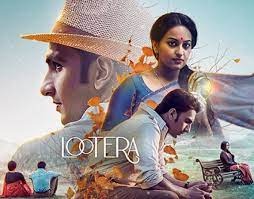Lootera’s Original Interpretation of The Last Leaf: Beyond O. Henry
There is a long tradition in Indian cinema of adapting strong literary works into films that engage audiences on both an aesthetic and an emotional level. One such film that has mesmerized audiences with its intricacy and narrative talent is “Lootera,” directed by Vikramaditya Motwane. Even though “The Last Leaf,” an O. Henry short story, is generally cited as the inspiration for the film, there is much more to it than that. The complicated narrative “Lootera” combines two distinct storylines, with the first half serving as an unintentional criticism on West Bengal’s colonial-era Zamindari System and the second half drawing influence from O. Henry’s well-known tale.
It is essential to comprehend the historical setting of “Lootera” in order to appreciate the complex narrative. The Zamindari System was a well-established feudal land tenure system in India during the British colonial period. The large landowners under this system, known as zamindars, were in charge of the peasants who cultivated the soil.
Under the Zamindari System, which was marked by tyranny, exploitation, and similar traits, there was a clear difference between the affluent zamindars and the lowly peasants. The arrangement was inherently unequal since zamindars benefited while peasants struggled to make ends meet. Against this social background, “Lootera” develops its plot.
The first part of “Lootera” is devoted to a thorough examination of the Zamindari System, as well as an allegorical portrayal of the injustice and misery experienced by the peasants. The main character of the film, Varun Shrivastav, portrayed by Ranveer Singh, appears as an archaeologist and accepts a request to dig a piece of land held by rich zamindar Zamindar Pathak, played by Barun Chanda.
As the tale progresses, we see the sharp contrast between the wealth of the zamindar’s palace and the poverty of the peasants. The zamindar’s lavish lifestyle is made possible by the downtrodden peasants who are forced to toil ceaselessly in his fields. This distinction between the zamindar and the peasantry reflects the significant socioeconomic inequities that defined the Zamindari System.
The film makes a subtle attack on the zamindar’s exploitation of the people via its use of visual storytelling. The spectator is made aware of the peasants’ hardships, dependence on the zamindar, and passionate yearning for change. The prospect of reform and the yearning for justice inside a firmly entrenched and unjust system are represented by Varun’s incursion into the zamindar’s realm.
Throughout the first half of “Lootera,” filmmaker Vikramaditya Motwane used symbols and metaphors to highlight the hardship of the peasants and the damaging repercussions of the Zamindari System. Varun is a visitor to a dilapidated home that represents the declining nobility. The once-grand structure has now fallen into disrepair, representing the zamindars’ declining power.
Art and archaeology both employ certain themes as metaphors for both the preservation of history and the revelation of unknown truths. Varun’s passion for archaeology represents the desire to uncover and expose historical injustices so that they may be made right.
The love bond between Varun and Pakhi, the zamindar’s daughter (played by Sonakshi Sinha), starts to take shape as the second half of “Lootera” dramatically departs from the Zamindari System. At this time in the narrative, the script for O. Henry’s “The Last Leaf” is being developed.
Varun embarks on a desperate journey to rescue Pakhi as she battles a life-threatening disease, much to the narrative of O. Henry’s “The Last Leaf,” in which a leaf painted on a wall serves as a sign of hope and nourishment.
The second half of “Lootera” addresses themes of love, sacrifice, and redemption as Varun’s actions are prompted by a true desire to atone for the injustices he saw in the first half of the movie. Here, the film skillfully combines the two, at first seem, unconnected storylines to create a coherent, captivating whole.
The film “Lootera” is a work of art that transcends the confines of being just an adaptation. It draws inspiration from O. Henry’s “The Last Leaf,” but it also deftly combines this literary work into a more significant narrative that serves as a subversive reflection on the Zamindari System in colonial-era West Bengal.
The film, a significant work of Indian cinema, is noted for its intricate plotting, rich symbolism, and superb cast work. The movie “Lootera” challenges spectators to think about past wrongs, the lasting power of love and atonement, and the potential for reform even inside the most entrenched authoritarian regimes.
Vikramaditya Motwane, the director of “Lootera,” skillfully mixes two unique tales to produce a film that both pushes and entertains its viewers to dive into the depths of human emotion and social transformation. It is without a doubt a work of cinematic art that, for those who are lucky enough to experience it, never fails to make a lasting impact.







